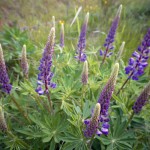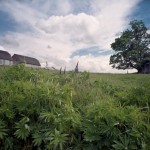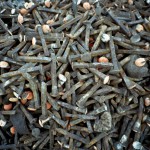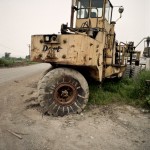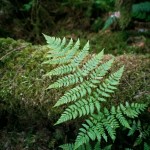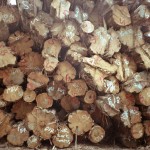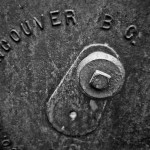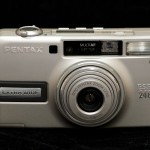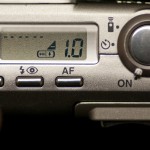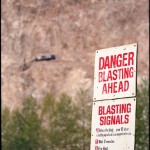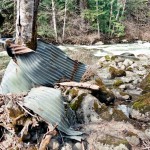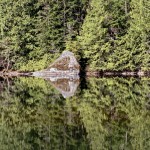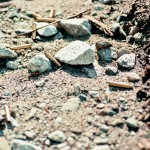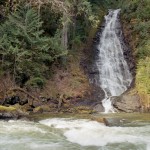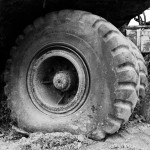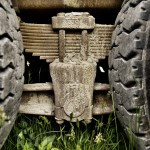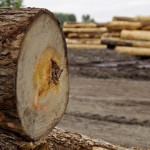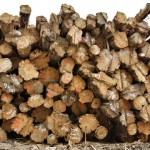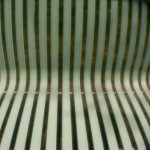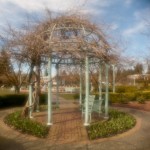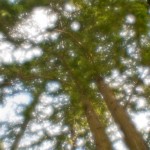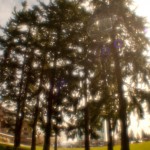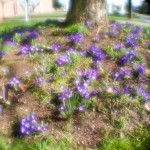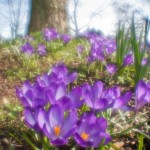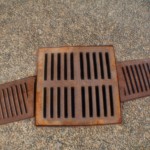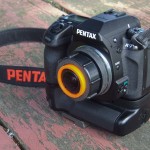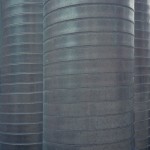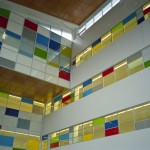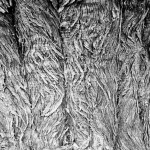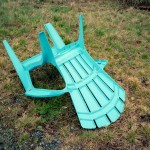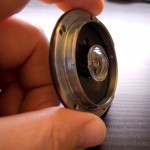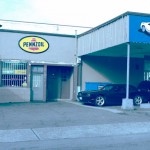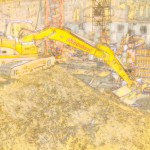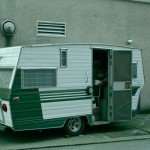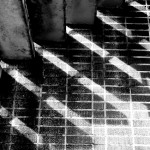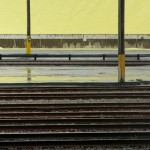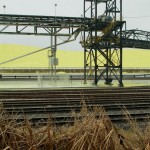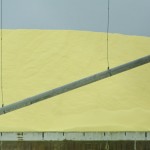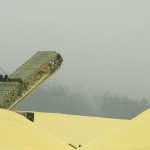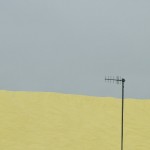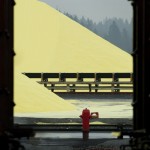Jul
2
2012
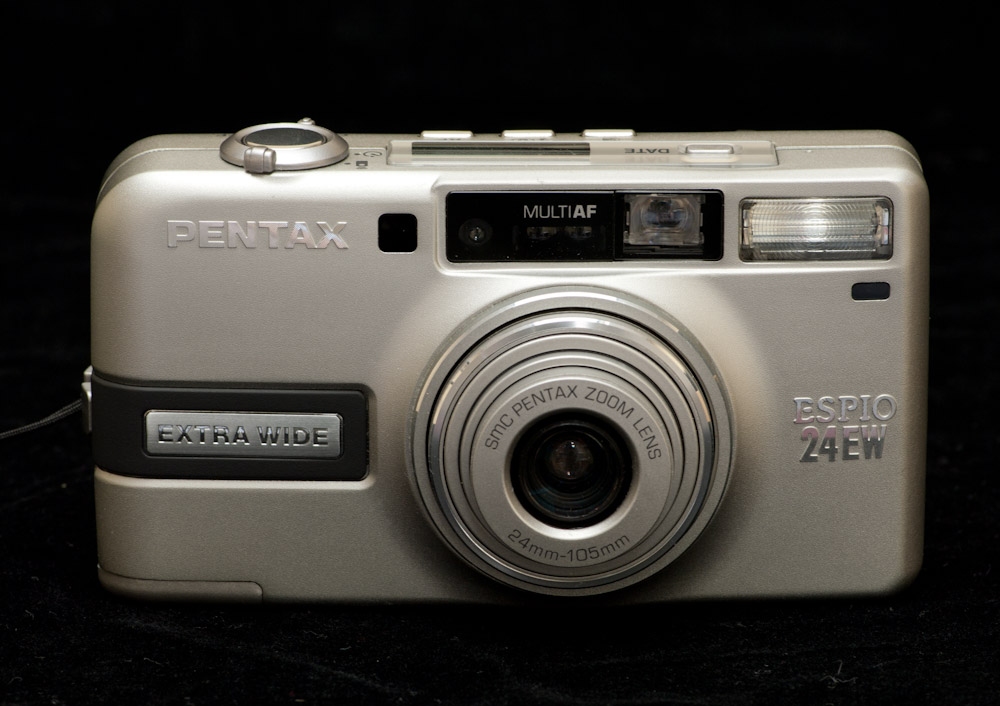
I didn’t christen it the ewwwww that came courtesy of Duncan Turner. The primary and interesting feature of the 24EW, and what helps gives it its name is the 24mm at the wide end of the lens. The EW [pronounced /u/w/] actually stands for Extra Wide but that’s hard to miss on the front anyway. Very few other fixed lens film cameras have anything this wide. Released in 2003 it is also one of the last film cameras that Pentax produced as they were already well on the transition to digital. As with cake you can’t have it and eat it too and the inedible part here is the distortion that you get from the lens at 24mm, fortunately much of the distortion near the edges is masked by the vignetting (that would be sarcasm)
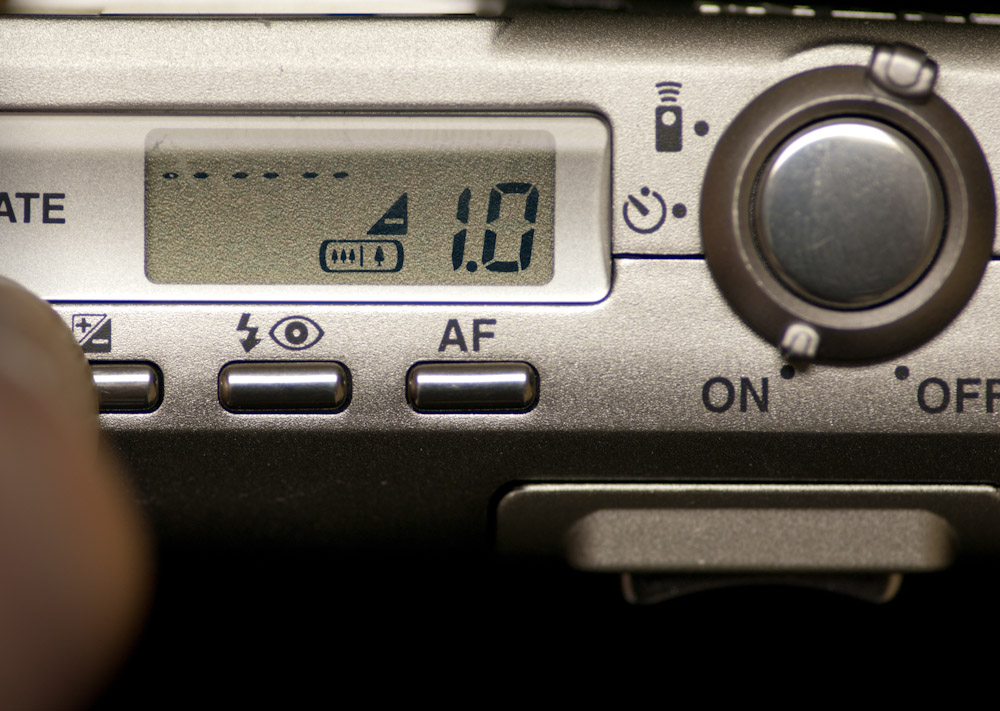 This camera has some great additional features the best of them being exposure compensation in half stops from -3 to +3 EV also it can close focus to 30cm.
This camera has some great additional features the best of them being exposure compensation in half stops from -3 to +3 EV also it can close focus to 30cm.
3 comments | tags: camera, film, Pentax, wide angle | posted in Cameras, Photography
Jun
11
2012
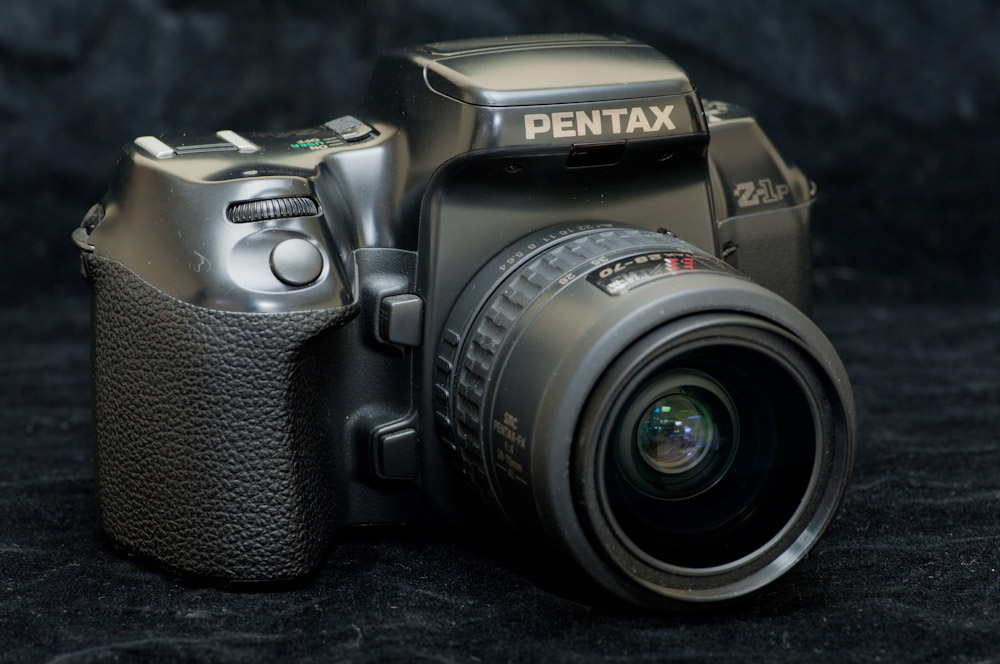
Briefly the Pentax Z1p was produced from 1994 to 2000 and has many of the features that you find on a DSLR today for controlling exposure and drive modes. Although cryptically hidden by the LCD based system, you can do 2 to 9 multiple exposures as well as bracketing and interval shooting among others.
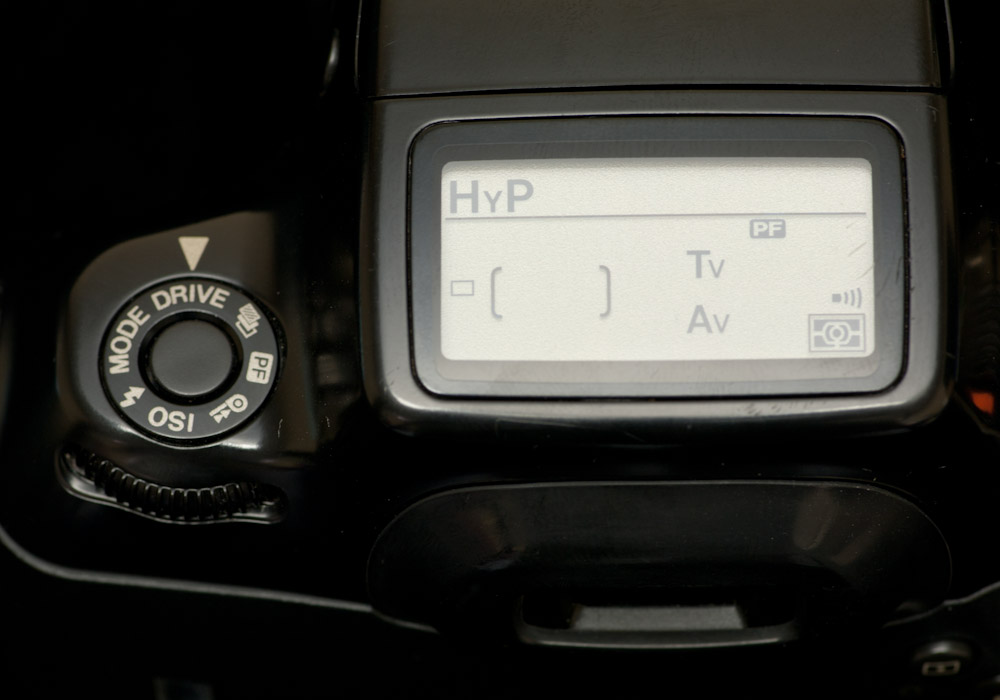
I like it mostly because I can use my full frame Pentax lenses on both it and my crop sensor DSLR the K-7. The DFA 100 macro WR is particularly well suited to use with it as well as the FA 50 f1.4.
4 comments | tags: film, Pentax | posted in Photography
May
20
2012
I thought I would post these images from today that I took it with the Pentax K-7 and processed on the iPad with Snapseed. While not an ideal workflow I imported the images into Lightroom as this is still the way that I am able to manage the images best. I then sorted and selected a few for further editing on the iPad. To put them on the iPad I use Lightroom’s publish feature to put them in a specific folder for this purpose. That folder is synced to my iPad by iTunes. Once the images are on the iPad it’s as simple as sitting down on the couch and editing.
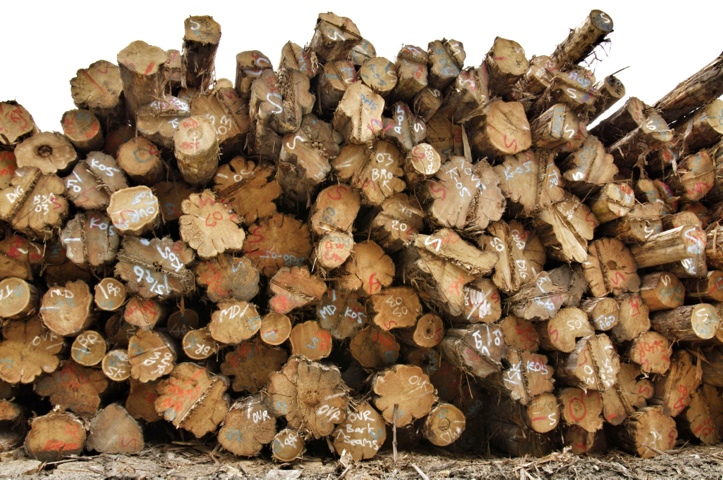
Now the only problem this creates is that if I import them back into Lightroom I will have what appear to be RAW files and edited versions of them renamed by the iPad. For now I am goint to tag them on import until I can figure out a better way. For reference the iPad 3 has no problems editing these full resolution DNG files but at this point they are being reduced in resolution from 4672 x 3104 down to 4096 x 2721 which I haven’t figured out as yet. Using the iPad is certainly a fun way to edit files and allows for more comfortable seating, now where is my coffee?
Taking pictures today was entirely for fun with Duncan of DLTphotographic and am looking forward to seeing his images too because despite being in the same locations I think we took images of different things. Of course the exception would be the few times the pursuit to fill our cell phones with pictures caused overlap, and I didn’t even see the pile of rail spikes.
2 comments | tags: Digital, iPad, Pentax, Photography | posted in Photography
Mar
26
2012
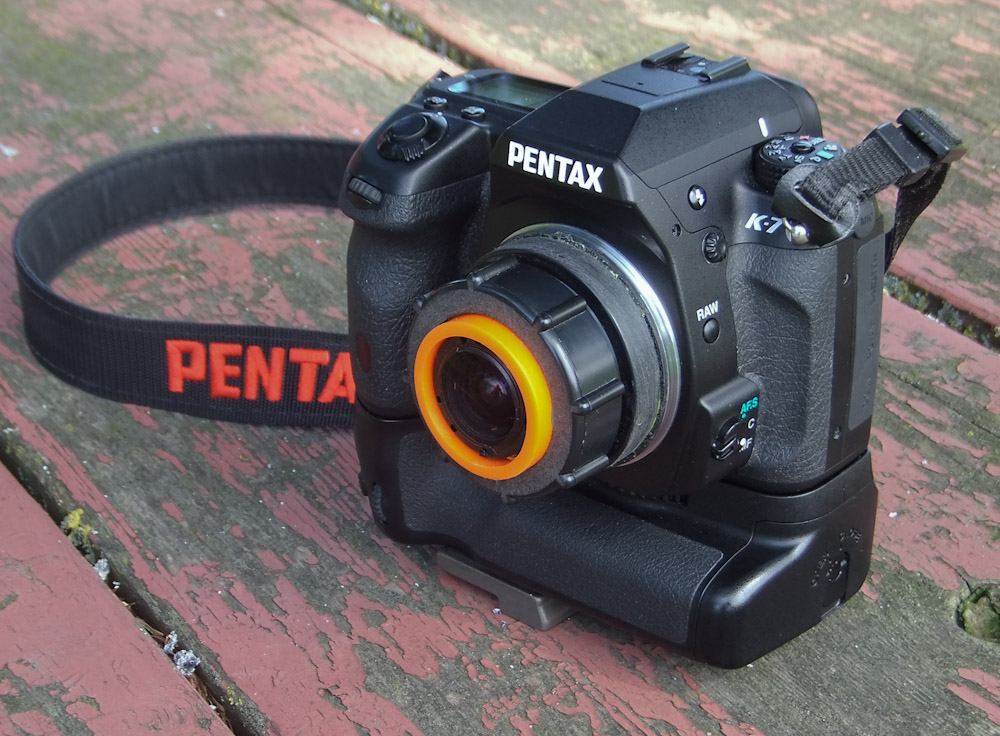
So after creating the worlds thinnest pancake lens I thought I would try my hand at making a wide-angle lens. The first thing I should mention is that the image quality is on par with the cost and I think I spent about $5 total making this lens. This is possible because a certain percentage of the cameras that I acquire are dysfunctional so they end up being disassembled for their bits. It’s those bits that I use to make other things such as this lens. I did need to buy a $2.69 piece of ABC plumbing in order to make the body of the lens.
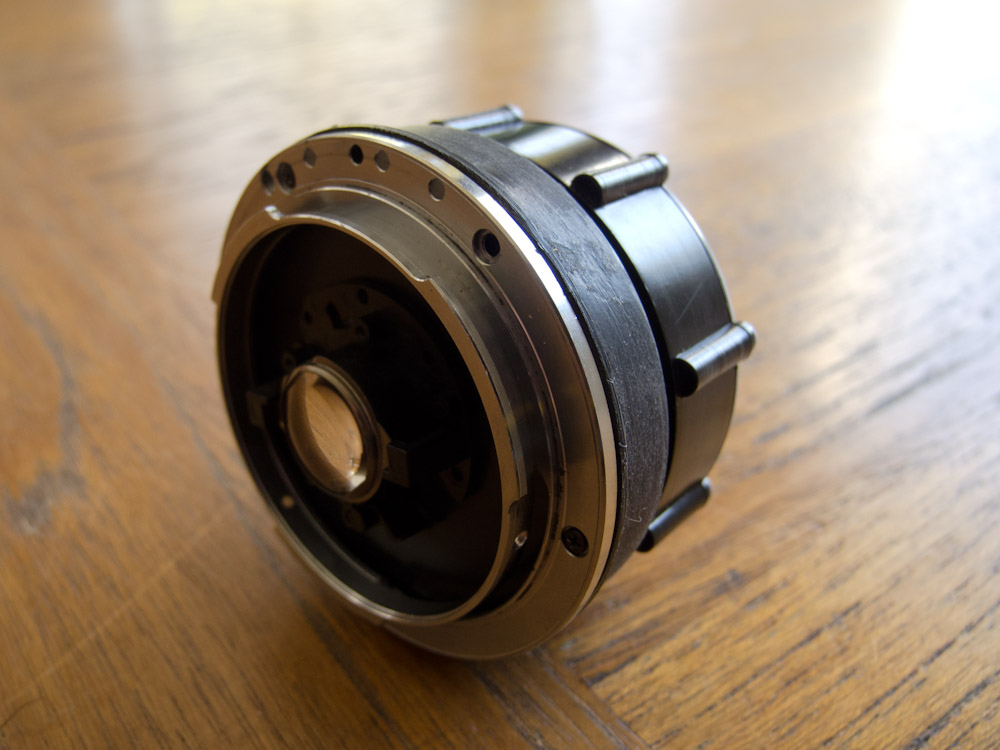
While I don’t know exactly where these lens elements came from, they are essentially the rear elements from two point and shoot cameras, one of them turned around to become the front group. Realistically your not going to be able to deal with most of the distortion when you do something like this so why fight it. This is the look of this lens take it or leave it. It turns out to be about a 15mm lens with horific yet wonderful barrel distortion. I haven’t determined the angle of view yet or the aperture which is always wide open in this version. Everything is rendered in a semi focused state no matter how near or far. Maybe there will be a Mark II version that performs a little better or maybe not as this is my digital Holga.
3 comments | tags: camera, DIY, lens, Pentax, wideangle | posted in Cameras, Photography
Mar
21
2012
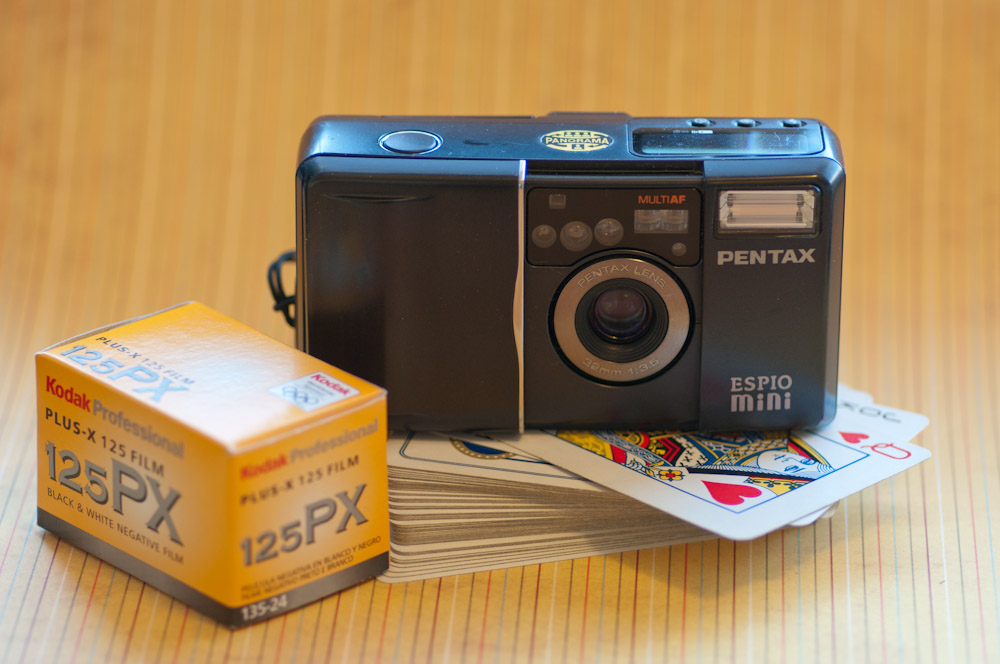
Oh no, my Pentax Espio Mini has developed a problem. The rewind motor is no longer rewinding the film all the way back after all the frames are exposed. The result is that I opened the back after the rewind only to find that the film was still there. I closed it quickly to limit the damage and then manually rewound the film in a dark bag (my backpack). So I think I lost about 4 frames near the beginning of the roll but more worrisom to me is the loss of my camera. I really like this little point and shoot and will have to begin a search for a replacement.
So what is so appealing about this camera? Well it’s extremely small, it has a fantastic 32mm f3.5 lens with three elements and has an accurate exposure system. The focus on this camera is very accurate with parallax correction in the viewfinder that allows framing when as close as the 12 inch minimum. I like that extra bit of view the 32mm gives over other cameras like the Olympus Stylus Epic /Konica Big Mini/Leica Mini or Yashica T3 with their 35mm lenses. And aside from the Olympus it is the smallest of the bunch.
And now for the images. These are from the previously mentioned light struck roll.
1 comment | tags: camera, film, Pentax | posted in Cameras, Photography
Mar
5
2012
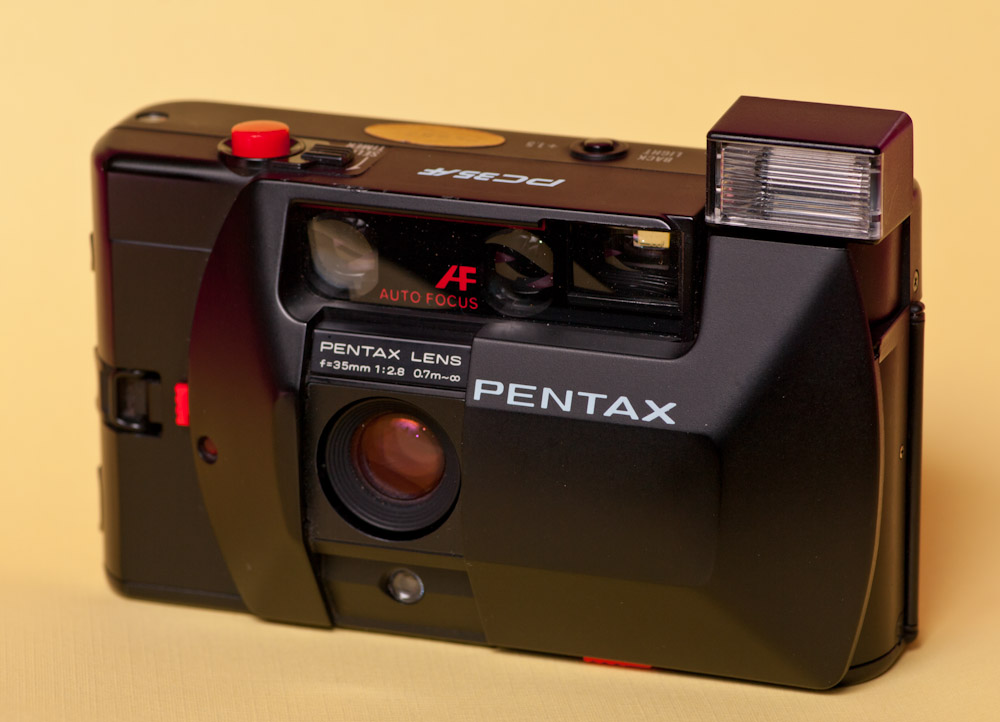
The Pentax PC35AF is yet another of the many 35mm fixed focal length cameras that where around in the 1980’s. Although slightly larger than the Olympus XA series of cameras it has a similar clamshell design and look. The PC35af though is an autofocus camera that still required manual winding of the film via a thumb wheel on the right hand side.
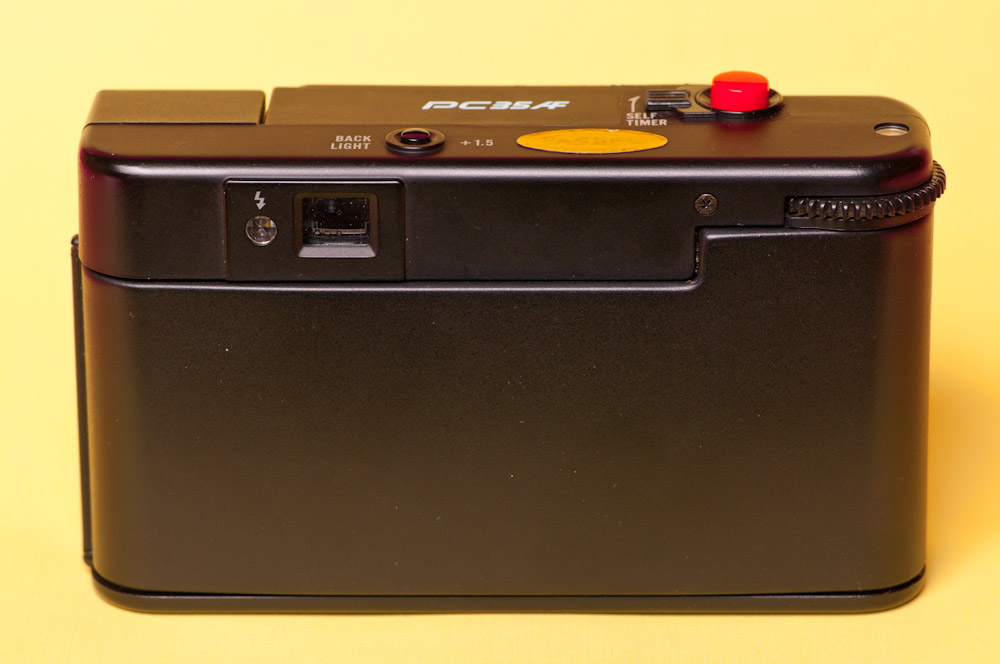
One nice thing about this camera is that it takes two regular AA batteries to run all it’s functions. The lens is comprised of 5 elements and has a respectable F2.8 maximum aperture . I like the minimalist design of the camera particularly when the clamshell is closed, it is however made of a somewhat slippery material and you need to be careful when holding it.
Operation is simple with only a +1.5 stop backlight over ride and the ability to lock focus and recompose. As I’ve stated many times I like the 35mm focal length finding it to be versatile and this camera does a decent job with several caviets, one is that the film speed is limited to a maximum of 400 ISO and the other is the lack of aperture or shutter control.
And now the requisite sample images.





1 comment | tags: film, PC35Af, Pentax | posted in Cameras, Photography
Mar
3
2012
So I’ve replaced the rear element of my lens that I’m claiming to be the thinnest pancake lens in the world and there is a definate improvement in the performance. I am now calling it the Wallalux Mark Ib 55mm f8.0 soft focus Multicoated pannenkoek lens. If that’s too much to say then just call it the W.

And here are some shots taken with it
2 comments | tags: lens, Pentax | posted in Cameras, Photography
Feb
28
2012
I’m not a corporation so I think I can make a claim like that without the need to back it up, this is the Internet right?
Introducing the Wallalux 55mm (Mark I) pannenkoek lens in K-mount

Your awestruck right? Recently Pentax announced the smc PENTAX-DA 40mm F2.8 XS, which may be the worlds thinnest interchangable lens, so I decided to see if I could beat that. Granted my lens has a fixed aperature of about f8.0 and can’t actually be focused and it’s 55mmish focal length works out to about 82mm on an APSc camera. So let me just recap here it’s an 82mm equivelent f8.0 fixed focus lens, but it is really thin.
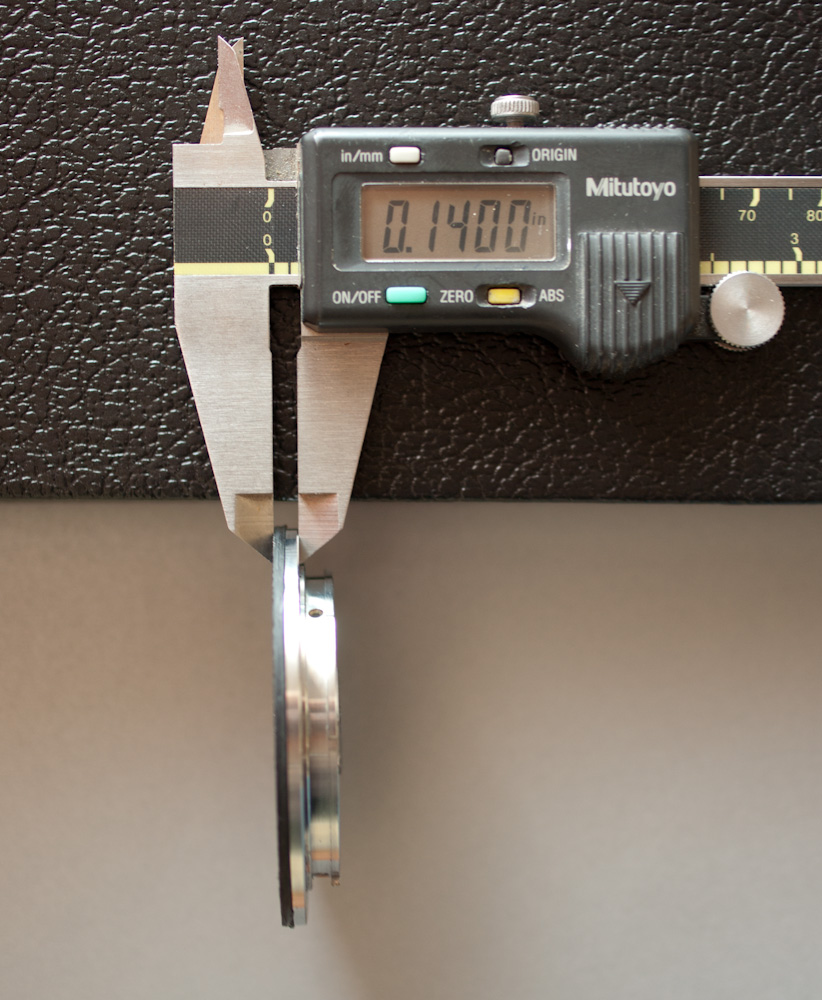
Yes that’s 0.14 inches or 3.55mm thick, this is the amount of the lens that protrudes outside the camera, which is less than the 9.2mm of the Pentax lens
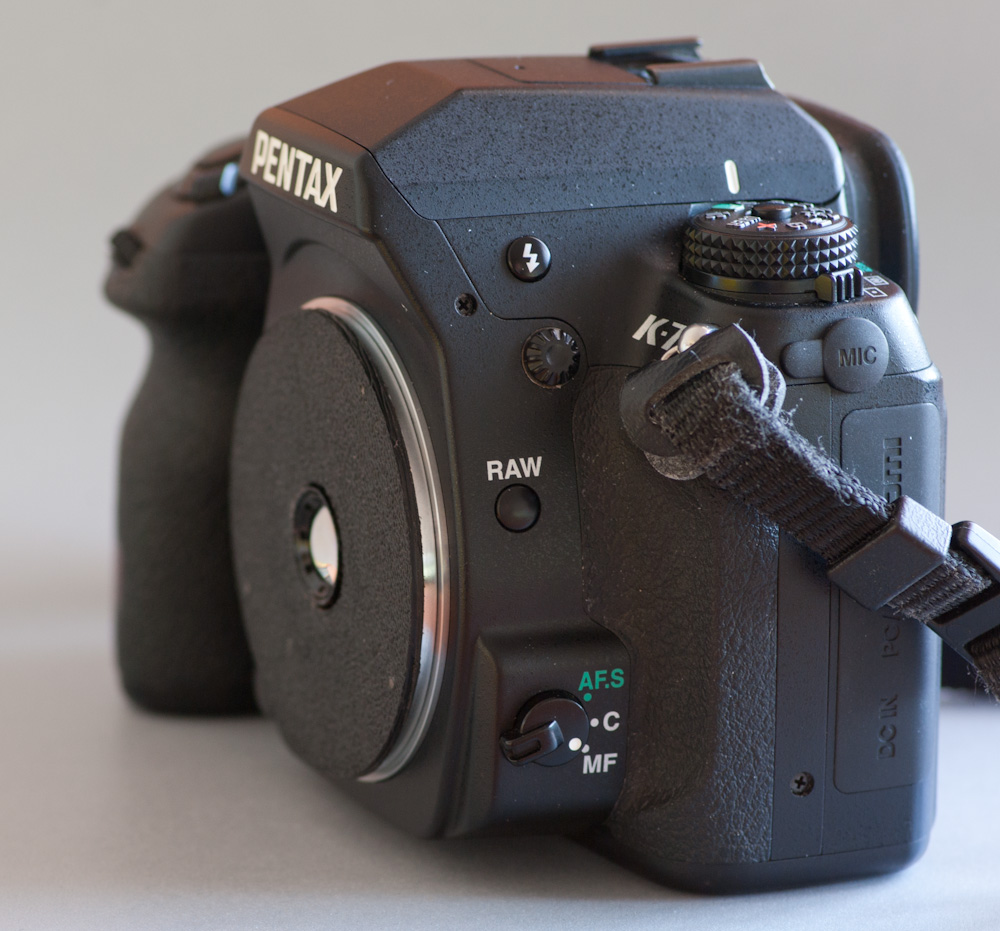
But your probably wondering “Yes it’s thinner than a cracker but does it take better pictures?” Well I’m here to tell you that taking pictures with a cracker is ridiculous (I will have to try that though) and that it does indeed work. Keep in mind this is the Mark I version and by the time I get to the Mark IV it will be amazing with all the latest technology (we’re still on the Internet right?) That or I will just build something else entirely which seems more likely.
Here are a couple sample images taken with the Wallalux 55mm (Mark I) pannenkoek lens, enjoy.
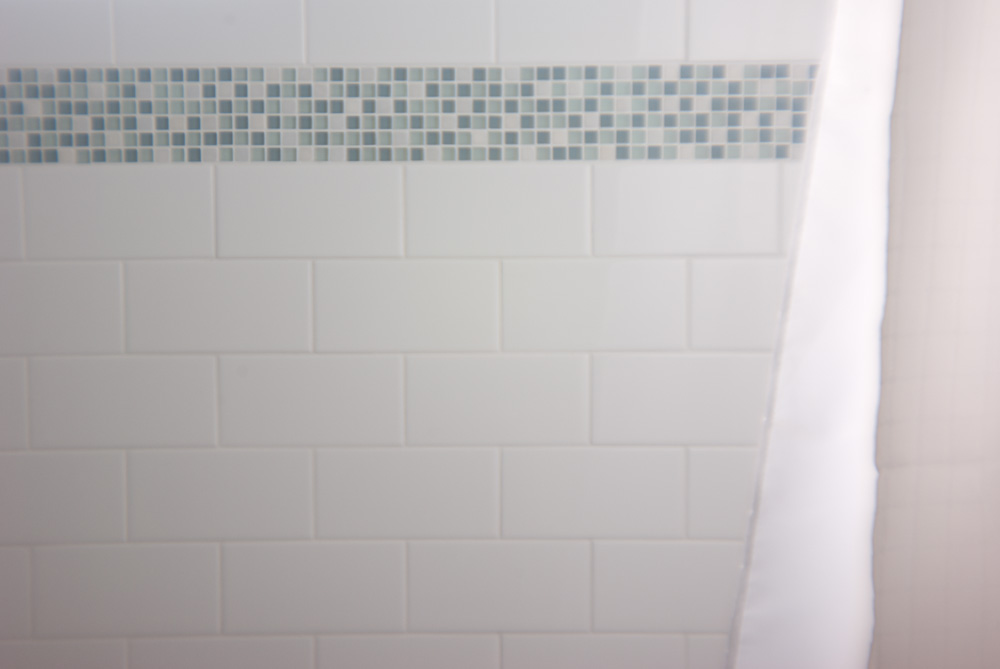
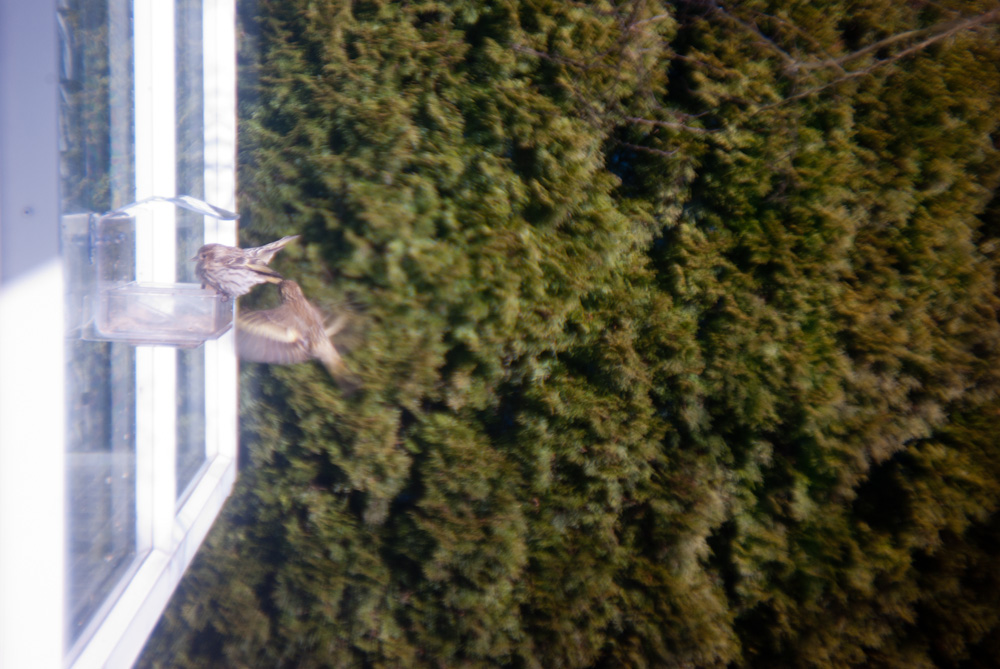
Any aberrations you see are likely caused by the rear element I am using to make the lens work with the K-mount registration distance, I’m hoping to replace that element in the Mark Ib.
6 comments | tags: K-mount, lens, Pentax, Photography | posted in Cameras, Photography
Feb
20
2012
Here are some more images that I processed in camera with my Pentax K-7. Yes I am well aware that you can do all of this on a computer but no one says that when you use your smart phone to do a similar thing.
no comments | tags: filters, K-7, Pentax, Photography | posted in Photography, Processing
Feb
10
2012
I’m sure there is a technical name for sulfur stock piled like this but to me it’s just a big pile of greenish yellow and I’m attracted to yellow like a bee to a flower. There are two locations in the Vancouver area where sulfur derived from the oil and gas industry in Alberta is hauled by rail. It’s then loaded onto ships headed for Asia to be used in industries there. These photographs were taken around Pacific Coast Terminals in Port Moody B.C. I could only photograph from the perimeter and even then mostly the view was obscured by trees and branches. It was only on my way back that the train that had been there was gone and a better view was available. I mostly used my FA 28-70 F4.0 lens because I could shoot through the fence with it’s smaller 49mm filter diameter.
1 comment | tags: Pentax, Photography, sulfur | posted in Photography
 This camera has some great additional features the best of them being exposure compensation in half stops from -3 to +3 EV also it can close focus to 30cm.
This camera has some great additional features the best of them being exposure compensation in half stops from -3 to +3 EV also it can close focus to 30cm.
